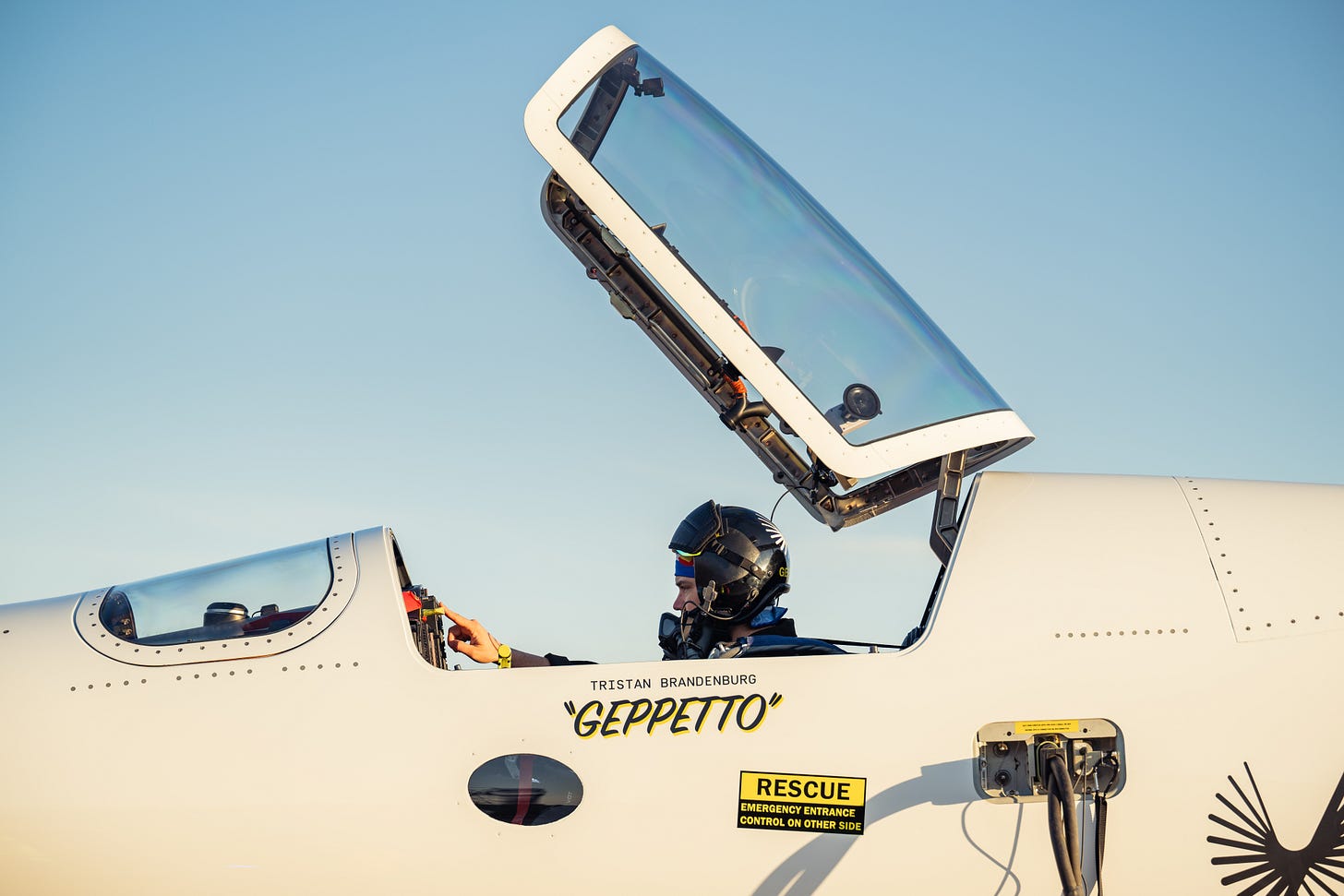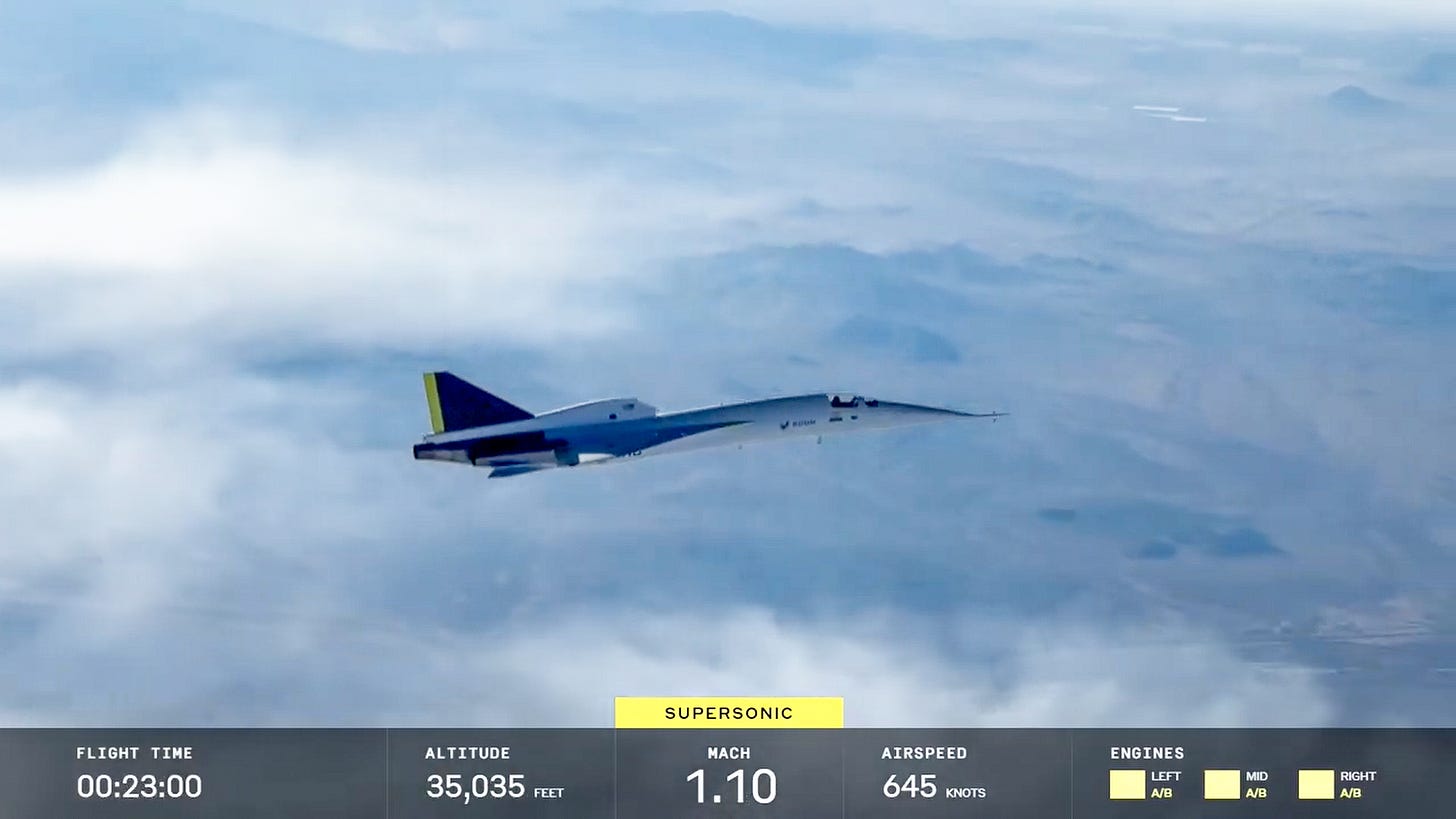In-depth interview with supersonic XB-1 test pilot Tristan “Geppetto” Brandenburg
Last week the XB-1 'Mojave Honey Badger' went supersonic for the first time
Former TOPGUN Adversary pilot Tristan “Geppetto” Brandenburg made history on January 28, 2025, when he took the Boom XB-1 demonstrator beyond Mach 1. This demonstrator for the far larger 61-metre Overture supersonic transport could herald the dawn of the second age of supersonic air travel, and possibly even a supersonic Air Force One. I spoke to Geppetto to find out more about the 'Mojave Honey Badger'.
Congratulations, tell me about both your first flight and first supersonic flight in the XB-1
My first flight in XB-1 was XB-1’s second flight. Bill “Doc” Shoemaker flew the first flight in March 2024. On the first flight, we learned a ton about the aircraft and as a result, made some modifications to the flight control system. My first time flying XB-1 was the first time those modifications were tested airborne.
Perhaps the thing I remember most from my first flight was the nerves and adrenaline I experienced right before brake release, and then how they all just evaporated, and I felt right at home as soon as the wheels left the ground. I attribute that calm to the amount of time I spent preparing in the simulator. We spent a lot of time and money making sure the simulator was as close to the real thing as possible, and that really paid off.
The first supersonic flight was awesome. This was the moment that the entire company had been working toward for a very long time. Every single person at Boom had a part in that flight, and it was the proudest moment of my career to be a part of that team. Of course, it didn’t go exactly to plan, but it was all within the various contingency plans that we had briefed. While supersonic, we were restricted to the Bell X-1 Supersonic Corridor, the airspace named for the first aircraft ever to exceed the speed of sound. We shared that airspace with the Air Force, and an F-16 was used in one of the spin areas. This caused us to stop our first supersonic run early to avoid disrupting their mission. The silver lining was that it allowed me to turn around and accelerate through the supersonic two more times, and we were still able to accomplish all our test objectives. While supersonic, one of our test points was to evaluate the handling qualities; in other words, how does the airplane feel? I am very pleased to report that XB-1 flies great supersonic. In fact, she flies better at Mach 1.1 than anywhere else.
How did it feel to pass Mach 1, and how fast did you go?
While the aircraft is accelerating through high subsonic Mach numbers, shock and expansion waves start to form. One of the most obvious effects of these shock and expansion waves is errors in the pitot-static system, the system which measures airspeed and altitude. Every airplane I’ve flown supersonic experiences this error to some extent and XB-1 is no exception. As I accelerated, the Mach number increased to 0.97 and then stagnated. Altitude decreased even though my Inertial Navigation System (INS) indicated the aircraft was level. Then suddenly, the Mach number jumped to 1.05. So I never actually saw 1.00 on the Mach indicator. While accelerating, I could feel a little rumble, and the airplane tended to roll a little from side to side. But once she was stable at Mach 1.10 the rumble smoothed out, the rolling stopped, and everything felt smooth. It was XB-1’s happy place. The max speed we saw was Mach 1.12
.What did it feel like to light the afterburners?
Keep reading with a 7-day free trial
Subscribe to Hush-Kit Aviation Newsletter to keep reading this post and get 7 days of free access to the full post archives.


